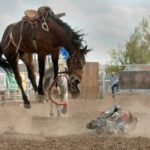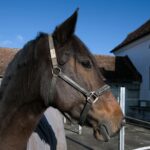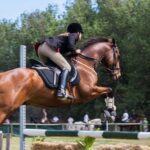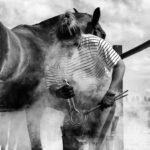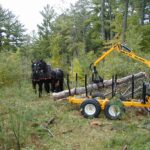The moments before a major competition often determine success or failure. As athletes prepare to showcase months or even years of training, the warm-up routine becomes the critical bridge between preparation and performance. A proper warm-up doesn’t just prepare your body physically—it creates the mental foundation for peak performance. Whether you’re a seasoned professional or a weekend warrior facing your first competitive event, understanding how to effectively prime your body and mind can make the difference between achieving your personal best or walking away disappointed. This comprehensive guide explores science-backed warm-up strategies across different sports and competition types, helping you develop a pre-competition routine that maximizes your potential when it matters most.
Understanding the Science Behind Effective Warm-Ups

The physiological benefits of warming up extend far beyond simply “getting warm.” During an effective warm-up, your core body temperature rises, increasing blood flow to working muscles and enhancing the delivery of oxygen and nutrients essential for optimal performance. This temperature increase also improves the elasticity of muscle fibers and connective tissues, reducing the risk of strains and tears during high-intensity movements. Neural pathways become more efficient as well, with studies showing improved reaction times and coordination following properly structured warm-up protocols. Perhaps most importantly, these physiological changes work together to prepare the body’s energy systems for the specific demands of your competition, ensuring you can access peak power output from the moment the starting gun fires.
The Psychological Component: Mental Preparation Strategies

The mental aspect of competition preparation is often overlooked but proves equally crucial to physical readiness. Research from sports psychology demonstrates that incorporating specific mental techniques during warm-up can significantly impact performance outcomes. Visualization exercises, where athletes mentally rehearse their competition performance in vivid detail, have been shown to activate many of the same neural pathways used during actual physical execution. Pre-performance routines—consistent sequences of thoughts and actions—create a sense of control and familiarity that reduces anxiety and improves focus under pressure. Many elite athletes also incorporate mindfulness practices that anchor them in the present moment, preventing the mind from wandering to outcome-focused thoughts that generate unnecessary pressure. These psychological techniques, when integrated with physical preparation, create an optimal state of focused arousal often described as “the zone.”
Dynamic vs. Static Stretching: What Research Reveals

The debate between dynamic and static stretching has been largely settled by contemporary research, particularly for pre-competition scenarios. Dynamic stretching—which involves moving parts of your body through a complete range of motion in a controlled, often sport-specific manner—has proven superior for performance enhancement immediately before competition. Studies consistently show that dynamic movements increase power output, speed, agility, and reaction time when performed as part of a warm-up routine. Conversely, traditional static stretching (holding a stretch in one position) has been shown to temporarily reduce muscle power and explosive performance when done immediately before competition, making it less suitable for pre-event preparation. This doesn’t mean static stretching lacks value—it remains beneficial for general flexibility when performed after workouts or as part of regular training—but the evidence clearly favors dynamic movement patterns in the crucial pre-competition window.
The Progressive Warm-Up Framework: A Universal Approach

Most effective pre-competition warm-ups follow a progressive structure that systematically prepares an athlete for peak performance. The framework typically begins with 5-10 minutes of light cardiovascular activity—jogging, cycling, jumping rope—to elevate heart rate and increase core temperature. This initial phase transitions into more dynamic mobility work addressing major joint complexes relevant to your sport, such as hip circles, shoulder rotations, or ankle mobilizations. The intensity gradually increases during the third phase, incorporating sport-specific movement patterns at submaximal intensity—think high knees, butt kicks, or lateral movements for runners; practice swings for golfers or tennis players. The progression culminates with performance activation, including several brief, explosive efforts at or near competition intensity to prime the neuromuscular system for immediate high output. This methodical progression allows systems throughout the body to harmoniously reach optimal readiness without premature fatigue.
Sport-Specific Warm-Ups: Tailoring for Individual Disciplines

While the progressive framework applies broadly, effective warm-ups must ultimately be customized to the specific demands of your competitive discipline. Endurance athletes benefit from progressively increasing pace or resistance while maintaining relatively low intensity throughout their extended warm-up periods, often culminating with several “strides” or accelerations. Power athletes like weightlifters, throwers, or sprinters require more extensive technical preparation and activation of fast-twitch muscle fibers, typically using progressively heavier loads or increasingly explosive movements. Team sport athletes need comprehensive preparation that addresses multi-directional movement, sport-specific skills, and often position-specific demands. Combat sport competitors often emphasize partner drills that prepare both the body and tactical awareness. The most effective sport-specific warm-ups analyze the movement patterns and energy systems most critical to competition success, then systematically prepare those elements while minimizing unnecessary fatigue.
Timing Your Warm-Up: Optimizing the Pre-Competition Window

The timing of your warm-up can significantly impact its effectiveness, requiring strategic planning based on competition logistics. Research suggests the optimal window for completing an intensive warm-up is approximately 5-15 minutes before competition begins, as physiological benefits begin to diminish after about 15-20 minutes of inactivity. For competitions where this timing proves impractical—such as swimming events with long marshaling periods or track meets with unpredictable starting times—athletes should consider implementing a two-phase approach. The main warm-up accomplishes general preparation, while a condensed “re-warm-up” using minimal equipment maintains readiness during the final countdown to competition. Environmental conditions also influence timing decisions, with cold environments requiring longer, more intensive preparation and hot conditions necessitating careful management to avoid premature fatigue or overheating. Planning these timing elements reduces stress and ensures peak physical readiness aligns precisely with the competition start time.
Nutrition and Hydration: Fueling the Pre-Competition Phase

The nutritional component of warm-up preparation plays a crucial yet often underappreciated role in competition readiness. Proper hydration status should be established hours before the event, with athletes consuming 5-7 ml of fluid per kilogram of body weight approximately four hours pre-competition, followed by smaller amounts as needed. Pre-warm-up fueling typically focuses on easily digestible carbohydrates consumed 1-3 hours before competition, providing readily available energy while minimizing digestive discomfort. Many athletes benefit from small amounts of simple carbohydrates (sports drinks, energy gels, or fruit) during extended warm-ups, particularly for endurance events lasting over 60 minutes. Caffeine, when strategically timed approximately 45-60 minutes before competition, can enhance performance across many disciplines by increasing alertness and reducing perceived effort. Individual tolerance and preference should guide specific nutrition protocols, with competitive experience helping athletes discover their optimal pre-competition fueling strategy.
Equipment Considerations: Tools to Enhance Warm-Up Quality

Strategic use of equipment can significantly enhance warm-up effectiveness across various competitive environments. Resistance bands have become ubiquitous for activating key muscle groups and improving movement quality, with mini-bands particularly valuable for gluteal activation and external rotation strength. Foam rollers and massage tools facilitate self-myofascial release techniques that improve tissue quality and movement freedom in targeted areas. Weighted implements like medicine balls enable sport-specific movement patterns with added resistance, enhancing neuromuscular activation. In colder environments, properly layered clothing maintains elevated muscle temperature while allowing progressive removal as core temperature increases. Many elite athletes also utilize portable massage devices or percussive therapy tools to increase blood flow to specific muscle groups before competition. The key consideration for any warm-up equipment is portability and efficiency—tools should enhance preparation without creating logistical complications in the competition environment.
Adapting to Adverse Conditions: Warm-Up Strategies for Challenging Environments

Environmental extremes require thoughtful modifications to standard warm-up protocols to ensure optimal preparation without compromising competition performance. Cold environments necessitate more extensive preparation, often including additional layers that can be progressively removed, indoor spaces for initial warm-up phases when available, and sometimes heating aids like thermal creams or heated massage tools. Hot, humid conditions present the opposite challenge, requiring careful management of core temperature and hydration status while still achieving adequate physiological readiness. These conditions may necessitate shorter, more intense warm-up segments with longer recovery periods in shaded areas. High altitude environments demand even more gradual progression to compensate for reduced oxygen availability. Rain, wind, or unpredictable weather patterns require flexibility and contingency planning, often emphasizing maintaining physical and mental readiness despite suboptimal conditions. The most successful competitors adapt their warm-up strategies to environmental challenges while maintaining the essential elements that prepare them for peak performance.
Team Warm-Ups: Balancing Individual Needs with Group Cohesion

Team sports present unique warm-up challenges, requiring protocols that address both individual preparation needs and collective team dynamics. Effective team warm-ups typically begin with standardized cardiovascular and mobility work suitable for all positions, gradually transitioning to more specialized preparation based on positional demands. Many successful teams incorporate partner activities and small group drills that simultaneously develop physical readiness and team cohesion. The psychological component becomes particularly important in team settings, with many coaches implementing confidence-building elements and focusing exercises that help athletes transition from individual concerns to team-oriented thinking. Team warm-ups also serve important tactical purposes, often including brief strategy reminders or visualizations of key scenarios likely to arise during competition. The most effective team warm-up routines create a balance between scientific preparation principles and the invaluable psychological benefits of shared pre-competition experiences that unify athletes toward a common purpose.
Addressing Competition Anxiety Through Structured Preparation

Pre-competition anxiety affects athletes at all levels, but a well-designed warm-up routine can significantly mitigate its negative effects. Research indicates that familiar, consistent warm-up sequences create a sense of control and predictability that naturally reduces anxiety levels in high-pressure situations. Incorporating specific breathing techniques—such as 4-7-8 breathing or box breathing patterns—activates the parasympathetic nervous system, helping counteract the fight-or-flight response often triggered by competitive stress. Many elite performers include brief mindfulness practices within their warm-up routine, using sensory awareness to anchor themselves in the present moment rather than dwelling on outcome uncertainties. Perhaps most importantly, focusing on the physical process of warming up provides a productive channel for nervous energy that might otherwise manifest as counterproductive anxiety. For many athletes, the structured, familiar nature of their warm-up routine becomes a psychological safe harbor amid the uncertainties of competition.
Creating Your Personal Pre-Competition Ritual

Developing an individualized pre-competition routine transforms general warm-up principles into a powerful personal ritual that enhances performance reliability. Begin by analyzing your specific competitive demands, identifying the physical capacities, movement patterns, and mental states most critical to your success. Experiment systematically during lower-stakes competitions or simulated practice scenarios, noting which warm-up elements leave you feeling optimally prepared. Document your findings in detail, creating a written template that includes specific exercises, durations, intensities, and even mental cues that produced your best results. Over time, refine this template based on performance outcomes, gradually developing a routine that addresses your unique physiological and psychological needs. The most effective personal rituals balance scientific principles with individualized elements that may include specific music, visualization sequences, or even seemingly superstitious behaviors that create comfort and confidence. When fully developed, this personal ritual becomes not just physical preparation but a reliable pathway into your optimal performance state.
Learning from the Elite: Warm-Up Insights from Champion Athletes

Studying the warm-up routines of championship performers reveals valuable insights applicable across competitive levels. Olympic sprinters typically employ extensive activation work targeting posterior chain power, followed by progressively faster accelerations that mirror competition intensity without causing fatigue. Elite endurance athletes often utilize “primer” intervals slightly above race pace to stimulate the exact energy systems they’ll rely on during competition. Professional basketball players frequently incorporate shooting progressions that begin close to the basket and systematically expand outward, building confidence through success while progressively engaging more complex movement patterns. What unites these diverse approaches is meticulous attention to detail, consistency in execution, and the integration of physical and mental preparation into a seamless pre-competition experience. Perhaps most importantly, championship performers treat their warm-up as sacred preparation space, refusing to rush or compromise this critical performance foundation regardless of external pressures or distractions.
Conclusion: Turning Preparation into Competitive Advantage

A scientifically sound, personally optimized warm-up routine represents one of the most underutilized competitive advantages available to athletes at all levels. By understanding the physiological and psychological principles that underpin effective preparation, you can transform those critical pre-competition minutes into a powerful performance catalyst. The best warm-up routines evolve from general frameworks into personalized rituals that reliably produce your optimal performance state. When competition pressure mounts and outcomes hang in the balance, this well-rehearsed preparation sequence becomes an invaluable anchor—a familiar process that focuses your mind, prepares your body, and positions you for success. In the perpetual pursuit of competitive excellence, few elements offer more significant returns than mastering the art and science of warming up effectively.


